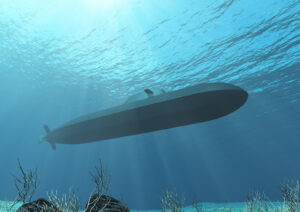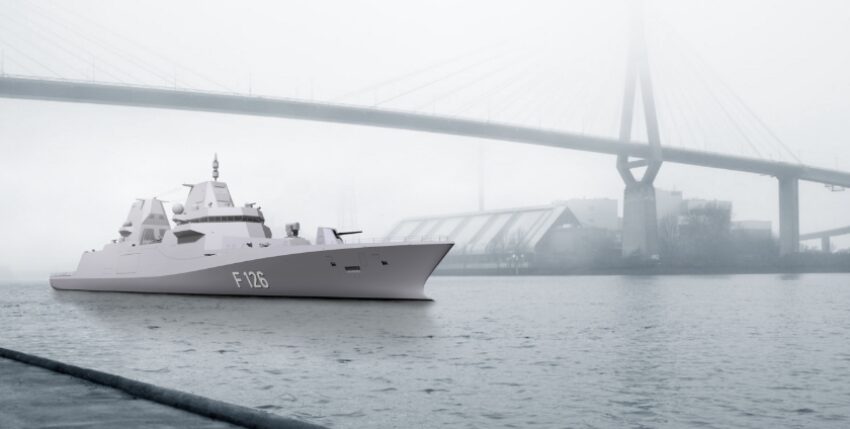Recently, it has become fashionable to criticise European navies, especially the German Navy. Critics argue, among other things, that European NATO members are completely dependent on the United States for their maritime security and naval command in the alliance. The German Navy is labelled a "Green Water Navy". It is also claimed that the German Navy is subject to severe "limitations", does not contribute sufficiently to alliance defence and is not doing enough to rectify this situation in the face of the threat posed by Russia.

Such criticism is permissible to a certain extent: The last few decades have not exactly been kind to the Bundeswehr, with the German Navy suffering in particular due to a lack of prioritisation on the part of the Bundestag when it comes to defence spending. But other problems in the German defence system also seem to have a disproportionate impact on the Navy. In the 15 years since the suspension of compulsory military service, Germany has failed to develop a reliable system for recruiting and retaining personnel, especially in a country where military service is still viewed with great reservation. The time-consuming and costly armaments and procurement procedures often delay and make the introduction of new capabilities more expensive. As with all Western navies, the German Navy suffered significant wear and tear on material and personnel after "Nine-Eleven" due to long missions to combat terrorism and piracy - challenging for ships and crews despite their low intensity - as well as a general decline in combat capability. The navy was also simply unlucky with some of its procurement projects, such as the main gearbox of the K130 corvette and the system integration of the F125 frigate. The overall concept of the F125 as a stabilisation frigate also seems out of date in today's security situation.
However, criticism can also go so far that it no longer corresponds to reality. It is claimed that "the current capabilities of the German navy are limited". Which capabilities these are supposed to be is not explained. There is a lack of analysis of certain decisions on naval planning at the highest level and their effects on naval operations, which only materialise decades later. The fact that the German Navy is smaller than it was 30 years ago, that it has problems with new recruits and operational readiness, or that not enough ammunition has been procured, does not mean that there are no capabilities at all. That would fail to recognise that some very real and essential capabilities are nevertheless available. There is no reference to political objectives, Ministry of Defence guidelines or NATO capability targets that can be considered objective standards by which to judge a navy's capacity and performance.
It is difficult to understand, for example, how the German Navy can be described as a "Green Water Navy" when the type ship of the latest frigate class recently completed an 18-month circumnavigation of the globe, including six months with UNIFIL, participation in RIMPAC, exercises with the Indian Navy and, above all, a transit of the Taiwan Strait.
Similarly, a criticism such as, "Germany's naval limitations become even more apparent when compared to the naval capabilities of NATO members on the Baltic Sea, such as Poland," ignores many simple facts. The Polish navy consists of two almost 50-year-old FFG-7 frigates, a single Polish-built patrol ship (the sole survivor of a planned but cancelled class of eight corvettes) and a few coastal minesweepers of mainly Soviet origin. Do these forces really contribute more to security in the Baltic Sea than Germany's Baltic-based Operational Flotilla 1, which consists of modern corvettes, submarines, minesweepers and tenders? Not including the large frigates of Operational Flotilla 2 in the North Sea? There are also the naval aviators, which make Germany - alongside Sweden - the only NATO Baltic Sea nation with a genuine "Maritime Patrol" component and which will operate with P-8 Poseidon aircraft from 2028.

In the same year that the new Polish frigate is due to begin sea trials, Germany will have built five new corvettes and two new fleet tankers, started construction of the F127 air defence frigate and two new Type212CD submarines, as well as being busy with the capability certification of the F126 frigate.
Germany also has alliance-leading expertise in mine defence and, with the ongoing development of MEKO S-X, also in unmanned submarine hunting systems.
The initial difficulties of the latest ship classes have been overcome and the platforms are now reliable, capable ships that contribute to security and deterrence on NATO's eastern flank. The corvettes provide important services in the Baltic and Mediterranean. Although under-armed, the F125 is a large, spacious and stable ship with an excellent combat management system, but also with plenty of space to flexibly install new features, including medium-range air defence systems. Just like the Spruance class of the 1970s, which was once lambasted with similar criticisms, these ships have untapped potential that they could still develop for high-end conflict.
The criticism that Germany has not built any "aircraft carriers, cruisers or destroyers" is even stranger. What for? Germany had only ever built a single carrier, its fate far from "glorious". Has building a carrier ever been considered in modern times? The last cruiser built in the world was the USS Port Royal (Ticonderoga class, 10,000 tonnes), commissioned 30 years ago. And at 7,000 tonnes, both the F124 and F125 have twice the displacement of the last class of German Type 103 destroyers - or about the same weight as a Königsberg-class light cruiser from the 1930s. It is disingenuous to claim that Germany did not have destroyers or other "large surface combatants" simply because, despite their size and capabilities, these ships were called "frigates" for political reasons. As Mahan once put it: "It's a nomenclature that probably facilitated budget approvals."
This kind of criticism - directed at the German Navy - also overlooks the fact that most NATO navies look back on a similar history - not least the US Navy itself. Have critics actually forgotten that the US Navy's recent shipbuilding programmes have not exactly covered themselves in glory (Littoral Combat Ship, Zumwalt class, Ford class, Cruiser Life Extension programme, and now the Constellation class)? The criticism sounds not only wrong, but unfair - by singling out Germany of all countries. It does a disservice to the men and women of the German Navy who, with commendable efforts and limited resources, fulfil national and NATO tasks as well as other international obligations.
The German Navy operates worldwide. It takes part in NATO's standing task forces and operations, UNIFIL, EUNAVFOR and countless major international manoeuvres. This author can attest to the professional seamanship and tactical ability of the naval personnel; also that they take good care of their ships. The 2024 Indo-Pacific deployment, with its transit of the Taiwan Strait, was described as "fantastic" by US Indo-Pacific Commander Admiral Sam Paparo. Nowhere is it more evident that Germany has a capable blue water navy than with the outstanding performance of the frigate "Hessen" in the EU Operation Aspides.
The German Navy therefore not only makes a meaningful and significant contribution to the freedom of the seas and the safeguarding of international rules, but also provides a cadre of experienced and cosmopolitan sailors and naval officers who have extensive global, multinational experience at sea. Thanks to Aspides, some marines now also have experience of real high-end air warfare. Senior naval officers are on a par intellectually with admirals of all other nations in maritime strategic thinking. They routinely contribute to global discussions on maritime affairs.
The problems and gaps that the German Navy suffers from are largely due to insufficient resources and a lack of political will on the part of the German government. The US Navy, with its comparatively massive budget, has no comparable excuse. Its current shortcomings in ships and readiness are the result of short-sightedness, mismanagement, over-utilisation and waste within the Pentagon and the defence industry. At least the German Navy is not in the unfortunate position of having to ask the taxpayer for forgiveness. However, it is faced with the task of having to convince its own population of the importance of naval power and the importance of protecting the sea lanes.
For it must not be forgotten that the degree to which a democracy maintains its military capabilities is a product of the political resolve of its elected leadership and therefore the nation's electorate. The decision to send the Indo-Pacific task force around Africa and not through the Red Sea was not made by an admiral, but by an elected politician. Given the country's history, is it really surprising that Germany hesitates - even 80 years later - to deploy its military in a way that can be seen as risky, aggressive, nationalistic, or even neo-imperialist?
The Germans have a navy to be proud of, despite the financial and political shackles. Those who criticise the Germans - or any other NATO navy - would do well to remember the shackles involved and then identify exactly what their criticisms are, to whom they apply, and by what standard they should be judged. If they fail to do so, they run the risk of alienating potential allies, especially the leaders of those navies, in their search for solutions. Since every NATO navy seems to live in a glass house, critics should be sure of their targets before they throw stones.
Chuck Ridgway is a former US Navy officer and worked for ten years at the NATO Joint Analysis and Lessons Learned Centre in Lisbon. Between 2000 and 2003 he was an exchange officer on the frigate Lübeck.
Chuck Ridgway










